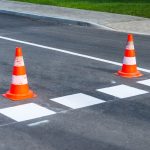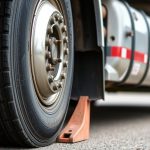Introduction
Why speed bumps are necessary in Los Angeles
Speed bumps are necessary in Los Angeles due to the high number of accidents caused by speeding vehicles. According to the Los Angeles Department of Transportation, speeding is a leading cause of traffic fatalities in the city. Speed bumps are an effective traffic calming measure that can reduce speeds and increase safety for pedestrians and drivers alike. They are particularly useful in residential areas where children and elderly residents are at risk of being hit by speeding cars. By slowing down traffic, speed bumps can also reduce noise pollution and improve the overall quality of life in neighborhoods.
The benefits of having speed bumps in your neighborhood
Having speed bumps in your neighborhood can provide numerous benefits. Firstly, they can help reduce the speed of vehicles, making the streets safer for pedestrians, cyclists, and other drivers. This can also lead to a decrease in accidents and injuries. Additionally, speed bumps can discourage cut-through traffic, which can reduce noise and improve air quality. They can also increase property values by making the neighborhood more attractive to potential buyers. Overall, speed bumps can improve the quality of life in your neighborhood and create a safer and more pleasant environment for everyone.
Step 1: Identify the Need
Gather data on speeding in your neighborhood
To gather data on speeding in your neighborhood, you can start by observing the traffic flow during different times of the day. You can also talk to your neighbors and ask them about their experiences with speeding in the area. Another option is to use a speed gun to measure the speed of passing vehicles. Additionally, you can request data from the Los Angeles Department of Transportation (LADOT) on the average speed of vehicles in your neighborhood. This information will be useful when presenting your case for speed bumps to the appropriate authorities.
Identify areas where speed bumps would be most effective
To identify areas where speed bumps would be most effective, it is important to consider factors such as traffic volume, speed limits, and accident history. Residential areas with high pedestrian traffic, such as near schools or parks, may benefit from speed bumps to slow down drivers and improve safety. Additionally, areas with a history of speeding or accidents may also be good candidates for speed bumps. It is important to consult with local authorities and community members to determine the most appropriate locations for speed bumps.
Step 2: Get Community Support
Talk to your neighbors and get their support
Once you have spoken to your neighbors and gained their support, it’s time to take your proposal to the next level. Contact your local city council representative and schedule a meeting to discuss your plan. Be sure to bring a detailed proposal outlining the location, size, and design of the speed bumps. It’s also important to have data to support your proposal, such as traffic volume and speed studies. Your city council representative can help guide you through the approval process and provide information on any necessary permits or fees. Remember, getting approval for speed bumps can take time and patience, but with the support of your neighbors and the proper documentation, it’s possible to make your streets safer for everyone.
Organize a community meeting to discuss the issue
Once you have gathered enough support from your neighbors and local officials, it’s time to organize a community meeting to discuss the issue of installing speed bumps in your Los Angeles neighborhood. This meeting will provide an opportunity for residents to voice their concerns and opinions about the proposal. It’s important to invite representatives from the city’s transportation department to attend the meeting and answer any questions or concerns that residents may have. Make sure to publicize the meeting well in advance and encourage as many people as possible to attend. By working together as a community, you can increase the chances of getting approval for speed bumps in your neighborhood.
Create a petition to show support for speed bumps
Creating a petition is a great way to show community support for speed bumps. The petition should include a clear statement of the problem, the proposed solution of speed bumps, and the reasons why speed bumps are necessary. It should also include the names and addresses of those who support the petition. Once the petition is complete, it can be presented to the local city council or transportation department as evidence of community support for speed bumps. It is important to gather as many signatures as possible to demonstrate the widespread need for speed bumps in the area.
Step 3: Contact Your City Council Member
Find out who your council member is
Once you have determined who your council member is, it’s important to reach out to them and express your concerns about speeding in your neighborhood. You can do this by calling their office, sending an email, or attending a local community meeting. It’s also helpful to gather support from your neighbors and create a petition to present to your council member. By showing that there is a significant demand for speed bumps in your area, you increase the likelihood of getting approval for the installation. Remember to be persistent and follow up with your council member to ensure that your request is being considered.
Write a letter or email explaining the need for speed bumps
In your letter or email, it’s important to clearly explain why speed bumps are necessary in your specific area. Provide data on the number of accidents or near-misses that have occurred due to speeding, and describe any other safety concerns such as the presence of schools or parks nearby. You may also want to mention any community support for the installation of speed bumps, such as petitions or letters from neighbors. Be sure to keep your tone professional and respectful, and address the letter to the appropriate city department or council member.
Request a meeting with your council member to discuss the issue
Once you have identified your council member, it’s time to request a meeting to discuss the issue of speed bumps in your neighborhood. You can do this by calling their office or sending an email. Be sure to explain the problem you are facing and why you believe speed bumps would be an effective solution. It’s also important to come prepared with data and evidence to support your case. This could include accident reports, traffic studies, or even a petition signed by your neighbors. Remember to be respectful and professional in your communication with your council member, and be open to their feedback and suggestions. With persistence and a well-prepared argument, you can increase your chances of getting approval for speed bumps in your community.
Step 4: Work with Your Council Member
Provide data and evidence to support your request
When requesting approval for speed bumps Los Angeles, it’s important to provide data and evidence to support your request. This can include traffic studies, accident reports, and speed limit data. You can also gather input from local residents and businesses to demonstrate community support for the installation of speed bumps. By presenting this information to the appropriate authorities, you can make a strong case for why speed bumps are necessary in your area and increase the likelihood of approval.
Be open to compromise and alternative solutions
When seeking approval for speed bumps in Los Angeles, it’s important to remember that compromise and alternative solutions may be necessary. While speed bumps are an effective way to slow down traffic, they may not be suitable for every situation. For example, some neighborhoods may prefer to install traffic circles or chicanes instead. It’s important to be open to these alternative solutions and work with city officials to find the best option for your community. Additionally, compromise may be necessary when it comes to the placement and design of the speed bumps. City officials may have specific guidelines that need to be followed, and it’s important to work within these parameters to ensure that your proposal is approved. By being flexible and open to compromise, you can increase your chances of getting approval for speed bumps in Los Angeles.
Stay engaged and follow up with your council member
After presenting your case to your council member, it’s important to stay engaged and follow up with them. This shows that you are committed to the cause and that you value their input. You can do this by attending community meetings, sending emails or letters, and even making phone calls to check in on the progress of your request. It’s also important to be patient and understanding, as the approval process can take time. By staying engaged and following up, you can increase your chances of getting approval for speed bumps in your neighborhood.
Conclusion
Getting approval for speed bumps takes time and effort, but it is worth it
One of the first steps in getting approval for speed bumps in Los Angeles is to gather support from your community. This can be done by speaking with neighbors, attending community meetings, and creating a petition. It is important to show that there is a need for speed bumps in your area and that they will improve safety for pedestrians and drivers alike. Additionally, it is important to work with your local government officials and follow the proper procedures for submitting a request for speed bumps. While the process may take time and effort, the end result of increased safety on your street is well worth it.
By working together, we can make our neighborhoods safer for everyone
One of the most effective ways to make our neighborhoods safer is by working together. This means collaborating with our neighbors, local government officials, and community organizations to identify problem areas and come up with solutions. By pooling our resources and knowledge, we can create a safer environment for everyone. Whether it’s advocating for speed bumps, organizing neighborhood watch programs, or simply keeping an eye out for each other, we can all play a role in making our communities safer. So let’s work together and make our neighborhoods a better place to live.





